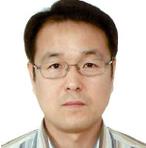Invited Speaker---Dr. Heejun Suk

Dr. Heejun Suk
Principal Researcher, Korea Institute of Geoscience and Mineral Resources, Groundwater & Ecohydrology Research Center, South Korea
Dr. Heejun Suk is currently Principal researcher in Department of Groundwater at Korea Institute of Geoscience and Mineral resources (KIGAM) in South Korea. He did his Masters in Hydrogeology (1998) from Seoul National University in South Korea and Doctor of Philosophy (2003) from Pennsylvania State University in USA. During his Ph.D., he specialized in developing the multiphase flow program. After he graduated from PSU, He moved to KWATER, where he focused on riverbank filtration research. Since 2007, he worked for KIGAM and pursed research on the topics of innovative numerical algorithm of groundwater flow and solute transport, numerical simulation of multiphase flow and solute transport, analytical solution of solute transport, multivariate statistical characteristics in the areas of Hydrogeology. He is now served as editorial member of Journal of Geography and Geology.
Speech Title: Numerical solution of the Kirchhoff-transformed Richards equation for simulating variably saturated flow in heterogeneous layered porous media
Abstract: A new numerical method was developed to accurately and efficiently compute a solution of the nonlinear Richards equation with a layered soil. In the proposed method, the Kirchhoff integral transformation was applied to a governing equation to transform the nonlinear Richards equation to a fully linear governing equation. However, in the Kirchhoff integral transformation approach, the transformed Kirchhoff head has dyadic characteristics at the material interface between different soil types. To avoid the dyadic characteristics of the Kirchhoff head at the material interface, the Kirchhoff head at the material interface was changed, with a single pressure head value at the material interface, applying a truncated Taylor series expansion to the pressure head. Accordingly, through the Taylor series expansion, a set of algebraic equations in the one-dimensional control volume finite difference discretized system formed a tridiagonal matrix system. Through a series of numerical experiments, the new method was compared to other numerical methods to determine its superiority.



